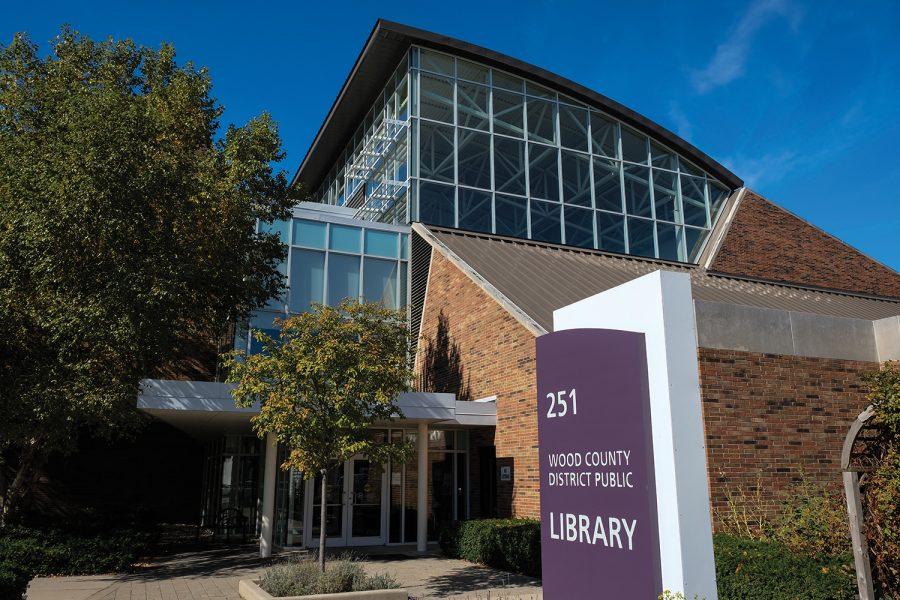In performing classical music, sometimes cooperation is the preferred policy.
The University’s Wind Symphony performed a concert with the William Mason High School Wind Symphony in Kobacker Hall of the College of Musical Arts building Feb. 1.
The bands’ performance acted as a showcase of the University’s abilities to high schoolers and exposed the high schoolers to a more high-level performance atmosphere.
The works performed by the University band are two of German composer Richard Strauss’ most difficult and rarely-performed works, “Festmusik der Stadt Wien” and “Sonatine No. 1,” which is also known as “Invalid’s Workshop.”
This concert occurred during the pieces’ 75th year in publication as a celebration of Strauss’ more obscure work.
“Because these pieces … are so difficult, (they) show how good our players are,” Ken Thompson, conductor of the University Wind Symphony, said. He said the compositions’ difficulties and lengthy performance times often encouraged ensembles to avoid performing them.
While they are rarely played due to their complexity, Thompson, who holds a doctorate in conducting, also said their rarity came from their more concentrated, chamber orchestra styles: only certain instruments can play in each piece, and only so many of each part can be played at a time. Because of this limitation, only about “36 of 60 … players were drawn from the Wind Symphony” to play for the entire concert, and each piece only contained certain groups of instruments.
The concert was split in two parts, with the high schoolers’ program, conducted by Ed Protzman, coming first. They played three compositions from varying composers in different styles. The whole band was given the opportunity to play major parts in every song; from trumpet solos to a grand piano accompaniment, Mason High School offered a wide variety of instrumentation.
Their section of the concert, despite some small errors and unbalanced sections throughout the concert, showed their band’s high level of performance.
Thompson spoke positively of the ensemble, calling them “one of the finest high school bands in the country.” He said bands from the school have performed at many high-profile venues throughout the program’s existence, including the Midwest International Band and Orchestra Conference and Carnegie Hall in New York City.
While some high school students left after the performance to go home — the school is located near Cincinnati — many other students and their parents stayed to watch the University’s portion of the concert.
After a seven-minute recess, the University’s band walked on the stage and played, having warmed up elsewhere. The 19 performers for this work were primarily brass-based, with nine trumpets playing primarily melodies and solos, nine lower brass instruments playing mainly harmonies and one percussion player providing beats in the background. Performances from this section of the band were nearly impeccable, and various melodies and harmonies kept the piece in constant evolution for listeners.
Soon after the brass players performed their one-part piece, a smaller arrangement of primarily woodwind players arrived to play a three-part sonata. No percussion players arrived, but four French horns provided the bass to counteract headlining flutes and oboes, along with various types of saxophones and clarinets.
Though initially marred by a few squeaky pitches from players, this portion of the Wind Symphony also played with a high performance level. Each of the different-sounding parts contained various instrument solos and melodies that earned special attributions after the end of the work.
Rachael Britt, one of the French horns who received recognition by the concert’s end, said, “I thought the performance went well.” She also said she had noticed “a lot of energy on stage.”
Though especially recognized for her playing, Britt said one of her favorite parts of the concert as a whole was getting to share such a “substantial work” with the high school students in attendance.
Thompson echoed the statement, saying the performance was “one more way we can showcase the talent here.” He further touted the skills of the band, saying many Wind Symphony performers were playing at a “near-pro level.”
The University aimed to impress, but not all in the audience considered the concert a successful recruitment effort.
Karen Holliday, whose son performed tuba in the high school section, said her child was not necessarily thinking of enrolling at the University. She praised her son’s performance in the concert, but said their family was not planning to watch the University’s band play that evening.
That said, she said she appreciated the opportunity for her son to play in a University setting, adding that she hoped the experience would help him “continue to improve” in music.
The performance, as is the case with most University band concerts, was live-streamed on the College of Musical Arts website. The concert was also recorded for a small circulation of TV airings by the Buckeye Cable Sports Network.
In addition to other concerts from the Wind Symphony and other University bands through the rest of the semester, Thompson said students should look forward to a Wind Symphony concert held on April 23 at the Detroit Symphony Orchestra’s music hall. He added that students should follow the bands’ social media for other concert information.
“We are truly one of the top music training institutions in the nation,” Thompson said about the entire music program.













